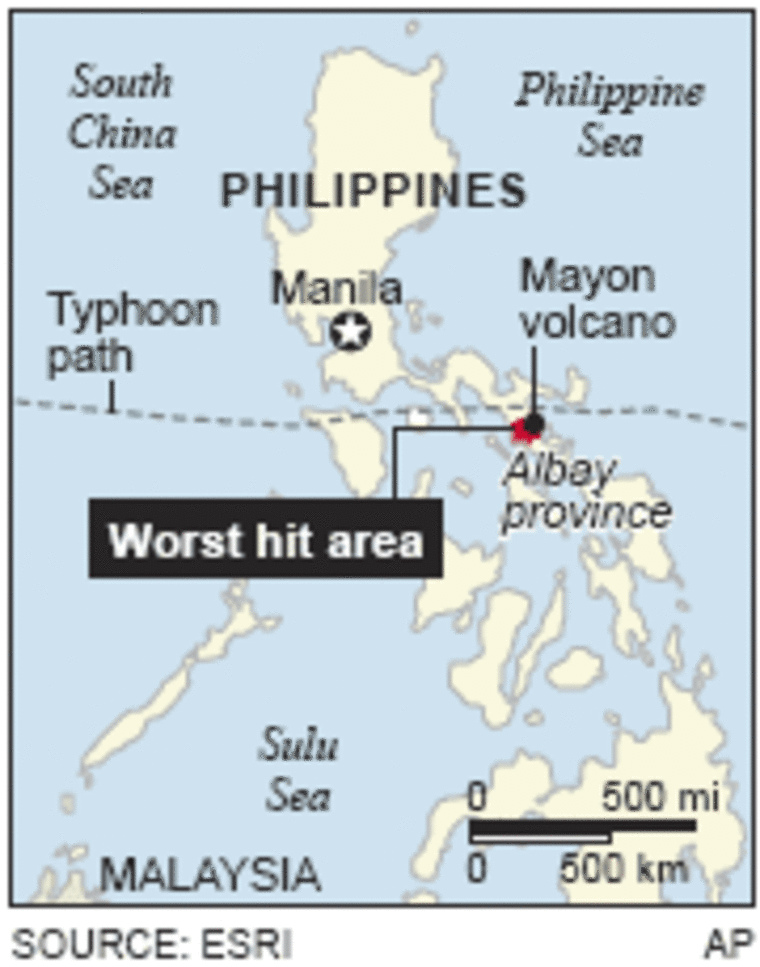Officials could only apologize Monday when asked about the prospects of finding survivors in the towns and villages swamped by mudslides from devastating Typhoon Durian, which has killed an estimated 1,000 people in the Philippines.
"At this time, no more. I'm sorry," said Juan Garcia, mayor of the town of Guinobatan. "It's almost impossible. They have been buried under sand and boulders. I don't think they can survive."
Durian was downgraded to a tropical storm before slamming Vietnam's southern coast, killing at least 24 people and destroying thousands of houses, officials said Tuesday.
The deaths brought Vietnam's storm-related death toll to 27. Three fishermen drowned Monday off the coast of Phu Yen province when their boat capsized as the storm approached.
The storm, which killed more than 1,000 people in the Philippines, was packing winds of 73 miles per hour when it made landfall in the southern Vietnamese provinces of Ben Tre and Tra Vinh on Tuesday morning, weather forecasters said.

On Thursday, Durian lashed the Philippines with 165 mph winds and a five-hour deluge that dislodged tons of debris from the slopes of the Mayon volcano. Walls of mud and boulders destroyed nearly every standing structure in their path.
"It was like bowling," said Guinobatan Vice Mayor Gene Villareal.
Official figures showed 450 dead, 507 injured and 599 missing, but Sen. Richard Gordon, head of the local Red Cross, said he believed more than 1,000 died in the thousands of homes buried under volcanic debris, mud and floodwaters.
Fernando Gonzalez, governor of worst-hit Albay province, said the ground was too slippery for backhoes.
"There's no choice but to dig by hand," he told Radio DZBB. "Practically speaking, we are not very optimistic we'll find survivors."
President Gloria Macapagal Arroyo declared the area a national disaster, allowing the government to more rapidly release funds needed to bolster aid efforts. Arroyo said she instructed the Department of Environment to step up a project to map all hazardous areas, like Mayon, to help warn communities of possible dangers.
"We must not leave things to fatal luck when we can develop the tools to prevent harm," she said.